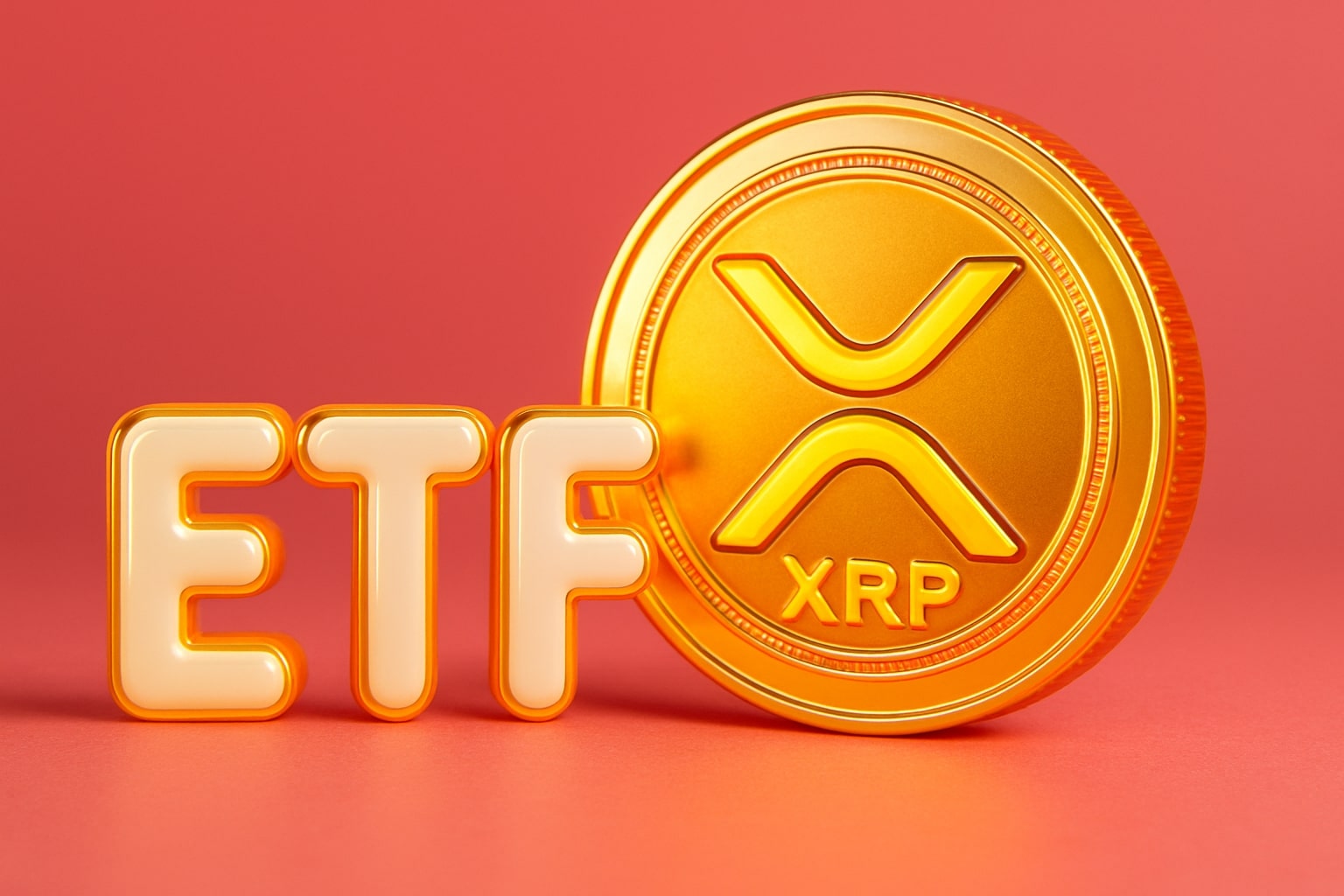
Bitcoin Price Forecast - BTC-USD Steadies Near $110K as Liquidity Reset and Quantum Threats
After falling to $107K, Bitcoin rebounded to $110,001.60 (-0.10%) amid massive $80.8B trading volume, renewed institutional buying, and growing miner investment into AI data centers | That's TradingNEWS
Bitcoin (BTC-USD) Holds $110,000 Amid Liquidity Reset, Quantum Fears, and Institutional Positioning
Bitcoin is trading near $110,001.60 (-0.10%) as of October 24, 16:10 UTC, after oscillating between $107,000 and $111,500 in a volatile week defined by liquidity compression, rising quantum-computing risks, and a structural rotation from speculative leverage toward institutional accumulation. The recent pullback of nearly 18% from early October highs above $125,000 has not shaken conviction among large asset managers like VanEck and Standard Chartered, who continue to describe the decline as a mid-cycle adjustment rather than a trend reversal.
VanEck Calls It a Mid-Cycle Reset as Leverage Normalizes
According to VanEck’s ChainCheck report, Bitcoin’s drop reflected a “healthy deleveraging” following a surge in futures open interest that peaked at $52 billion in early October. After cascading liquidations, leverage has fallen back to the 61st percentile of its historical range — a sign of a more balanced market structure. On-chain data confirms resilience: 722,000 daily active addresses and $86 billion in transfer volume, up 21% month-over-month.
VanEck notes that M2 global liquidity still explains over half of Bitcoin’s price variance, reaffirming its role as an “anti–money printing” asset. Asian sessions continue to exert price leadership, with regional liquidity tightening driving intraday swings. Despite volatility, VanEck maintains Bitcoin’s allocation in its model portfolios between 1.5% and 6%, favoring systematic exposure and opportunistic buying below $110,000.
Standard Chartered Eyes $200,000 by Year-End Despite Near-Term Weakness
Geoffrey Kendrick, Standard Chartered’s Head of Digital Assets Research, expects a temporary dip below $100,000, calling it “the last time Bitcoin ever trades under six figures.” He attributes near-term pressure to renewed U.S.–China trade tensions and short-term liquidity strains. However, he maintains his long-term forecast of $200,000 by year-end 2025 and $500,000 by 2028, emphasizing that gold-to-Bitcoin rotations signal institutional migration toward digital scarcity.
Kendrick highlighted that “recent gold selling to fund Bitcoin purchases” indicates stabilization in capital flows. He believes this dynamic, combined with central bank reserve diversification, reinforces Bitcoin’s macro hedge status.
Speculative Volume Surge Signals Return of Risk Appetite
Trading activity has reignited across spot and derivatives markets. Total Bitcoin trading volume surged to $80.8 billion, well above its 30-day average of $65.7 billion. Despite high volatility, BTC-USD maintained its value around $107,000–$110,000, reflecting renewed speculative demand.
The ADX reading at 26.8 shows a strengthening trend, while the RSI near 45 confirms Bitcoin is not yet overbought. Open interest now bases near $35 billion, suggesting market participants are cautiously rebuilding long exposure after the deleveraging flush. Analysts see this as a setup for a breakout once liquidity stabilizes and buyers absorb supply between $108,000 and $112,000.
Quantum Computing Raises Existential Security Questions for BTC
A growing theme this quarter is the quantum computing threat to blockchain encryption. Analysts such as Charles Edwards warn that Bitcoin’s elliptic curve cryptography (ECC) could be cracked within a decade if current quantum progress continues. Roughly 2,300 logical qubits could theoretically derive private keys from public ones — a milestone potentially achievable in 2–8 years.
Major tech players like Google, AWS, IBM, and Microsoft are ramping up quantum programs, while China has already allocated $55 billion to quantum development — double U.S. spending. Edwards argues that without a timely transition to quantum-secure wallets, Bitcoin could face its “worst bear market in history.” Ethereum’s Vitalik Buterin estimates a 20% probability that quantum computing disrupts cryptographic networks by 2030, adding urgency to BTC’s need for protocol upgrades.
For now, the risk remains theoretical, but the discussion is influencing institutional positioning and long-term valuation models
Read More
-
PPA ETF at $154: Can This Defense ETF Keep Beating ITA and SPY?
14.12.2025 · TradingNEWS ArchiveStocks
-
XRP ETFs XRPI and XRPR Pull In $975M While XRP-USD Fights To Hold $2
14.12.2025 · TradingNEWS ArchiveCrypto
-
Natural Gas Price Forecast: NG=F Hits $4.11 As Warm Winter Outlook Puts $3.913 Support At Risk
14.12.2025 · TradingNEWS ArchiveCommodities
-
USD/JPY Price Forecast - Dollar to Yen Can BoJ’s 0.75% Shock Break The 155–158 Range?
14.12.2025 · TradingNEWS ArchiveForex
CZ vs Peter Schiff: The Gold vs Bitcoin Battle Reignites
A new chapter in the long-running gold-versus-Bitcoin debate unfolded this week as Binance founder CZ and gold advocate Peter Schiff clashed over tokenized gold. Schiff unveiled plans for a blockchain-based gold product, calling it “the only logical use for blockchain.” CZ countered that tokenized gold is not truly “on-chain” because it relies on third-party custodians — a model that reintroduces trust into what should be a trustless system.
The debate gained traction as gold reached $4,300 per ounce, while Bitcoin traded around $110,000, both benefiting from dollar weakness and fiscal uncertainty in the U.S. Schiff’s launch and CZ’s rebuttal reignited questions about whether the future of money is rooted in physical scarcity or digital immutability. The market’s verdict remains clear: Bitcoin’s liquidity, portability, and supply algorithm continue to draw capital away from gold ETFs and into digital assets.
Bitcoin Hyper and the Evolution of the BTC Ecosystem
Parallel to the gold debate, the emergence of Bitcoin Hyper ($HYPER) highlights the expanding BTC ecosystem. Built as the first Bitcoin-native Layer 2 using Solana’s Virtual Machine (SVM) and zk-rollups, it bridges Bitcoin’s stability with Solana’s performance. The presale has raised $24.6 million, offering 48% staking rewards and tokens priced at $0.013165.
Bitcoin Hyper aims to bring DeFi, NFTs, and meme coins under Bitcoin’s umbrella, extending BTC’s reach beyond store-of-value status. Institutional investors are increasingly treating Layer 2 infrastructure as the next frontier of Bitcoin adoption, as it merges liquidity depth with smart contract functionality.
Bitcoin Miners Pivot Toward AI to Offset Halving Impact
A parallel trend reshaping BTC fundamentals is the pivot of Bitcoin miners toward artificial intelligence computing. After April 2024’s halving reduced rewards from 6.25 BTC to 3.125 BTC, mining profitability compressed, forcing operators to diversify. CleanSpark (NASDAQ:CLSK) led this movement, announcing new AI data centers in Georgia and hiring veteran Jeffrey Thomas, previously head of Saudi Arabia’s AI data initiatives. The stock surged 13% on the news.
Other miners — Marathon Digital (NASDAQ:MARA), Riot Platforms (NASDAQ:RIOT), Core Scientific (NASDAQ:CORZ), and TeraWulf (NASDAQ:WULF) — followed suit, redirecting power contracts and rigs to AI workloads. Collectively, Bitcoin mining firms raised $4.6 billion through loans and convertibles in late 2024–2025 to fund AI integration.
The CoinShares Bitcoin Mining ETF has soared 160% year-to-date, underscoring how the AI boom is reshaping miner economics and market sentiment. For investors, the dual exposure to AI and BTC presents a powerful hedge against cyclical mining downturns.
Technical Levels: BTC-USD Builds Support Above $108,000
Technically, Bitcoin is consolidating between $107,000 and $114,000, forming a symmetrical triangle that typically precedes strong directional breakouts. The 20-EMA and 50-EMA are flattening, signaling momentum compression before expansion. A clean close above $114,100 could target $115,900–$120,000, while a breakdown below $109,000 reopens the $100,000 demand zone.
According to CoinGlass data, the largest liquidation pools sit between $108,000–$108,500 (longs) and $114,500–$115,000 (shorts). This concentration suggests that any breach of these thresholds could trigger sharp volatility during low-volume weekend sessions. The RSI near 60 supports mild bullish bias, but sentiment remains cautious until Bitcoin decisively reclaims $115K.
Macro Outlook and Institutional Flow Trends
Institutional engagement continues to deepen, with CME Bitcoin futures seeing rising open interest alongside expanding ETF inflows. Spot Bitcoin ETFs added $1.7 billion over the past two weeks, reflecting renewed demand from pension funds and sovereign wealth vehicles.
VanEck and other asset managers now treat Bitcoin as a structural component of global liquidity cycles, with models showing a 0.82 correlation between BTC’s price and aggregate M2 growth. As the Federal Reserve signals a dovish bias heading into Q4, analysts anticipate renewed capital inflows into crypto, particularly if real yields ease further.
Market Sentiment and Forecast: Controlled Volatility Before the Next Expansion Phase
Despite macro uncertainty, Bitcoin’s market structure remains constructive. Volatility compression, normalized leverage, and strong on-chain participation all point toward accumulation rather than distribution. The current setup resembles mid-2023 conditions, where a similar liquidity drawdown preceded a multi-month advance.
Short-term resistance stands at $114,000–$115,000, with support at $108,000–$100,000. Sustained closes above $115,900 would confirm renewed bullish momentum and open the path toward $125,000 retests before year-end.
Verdict: BUY – Structural Uptrend Intact Despite Near-Term Risk
The evidence favors accumulation rather than caution. Liquidity-driven corrections remain contained, institutions are scaling in, miners are diversifying toward AI resilience, and Bitcoin’s role as a macro hedge continues to solidify.
While quantum and regulatory overhangs persist, price action near $110,000 represents strategic value.
Verdict: BUY — long-term uptrend intact, with the next accumulation zone firmly anchored between $107,000–$110,000 and targets of $125,000–$135,000 as the next liquidity expansion unfolds.

















